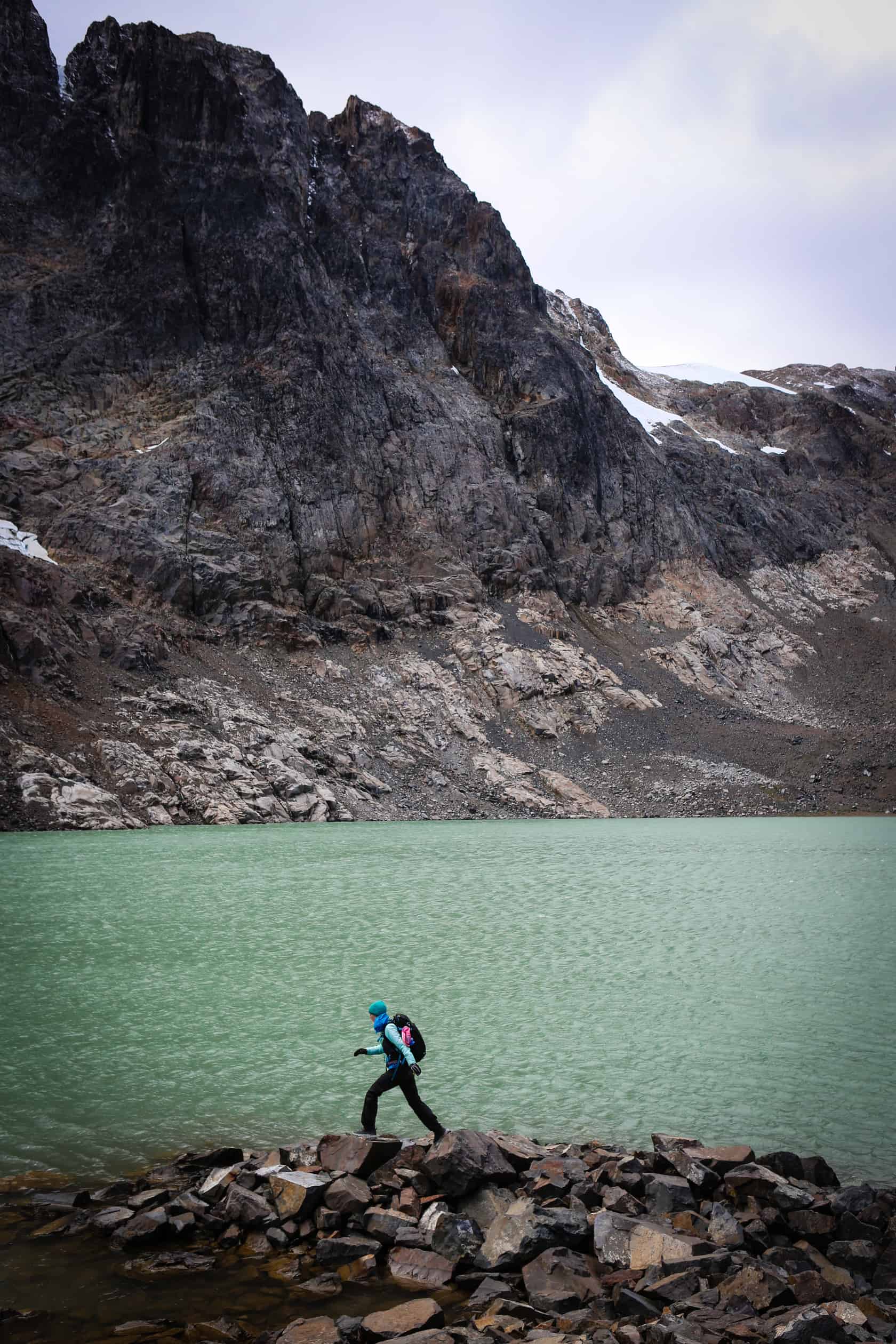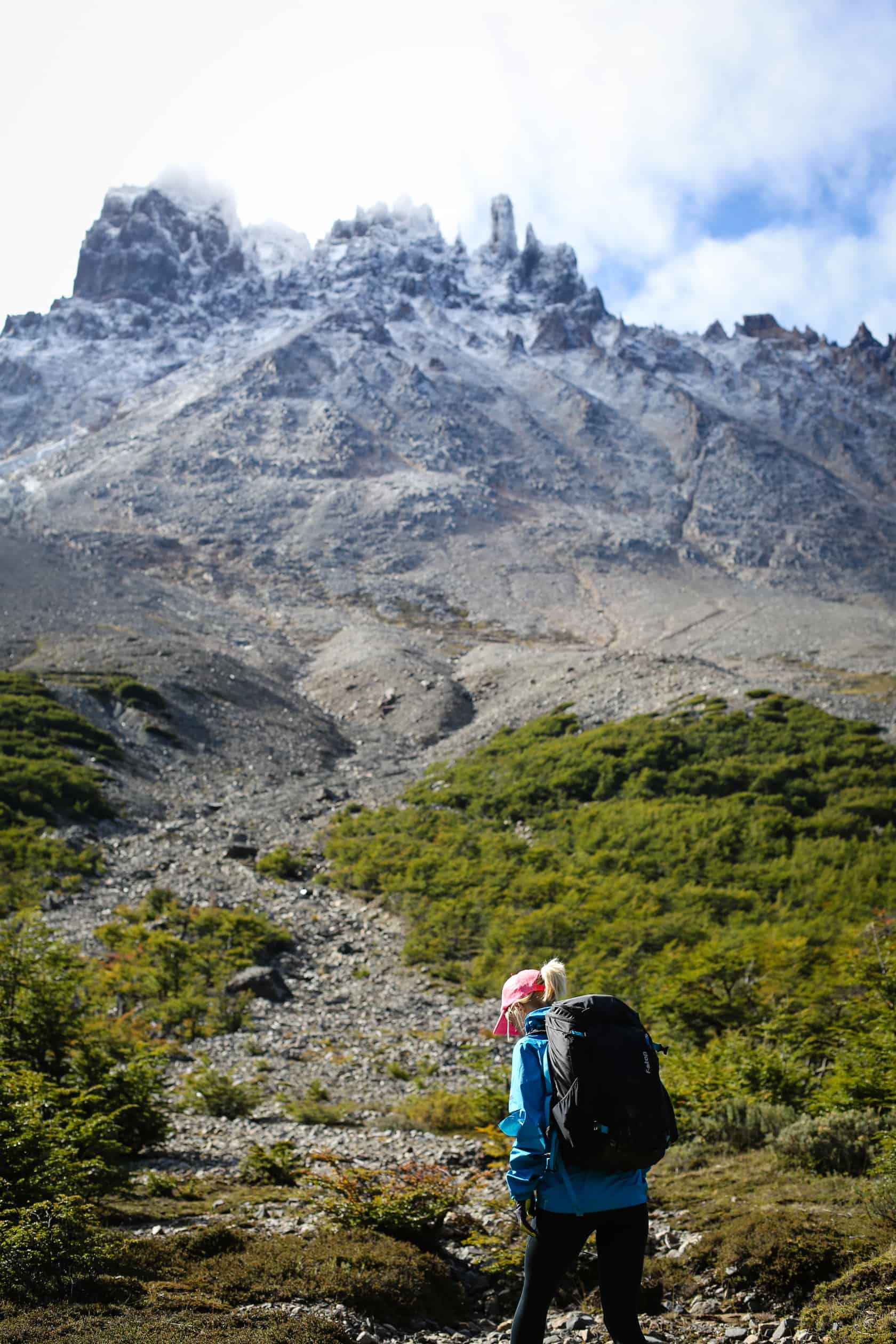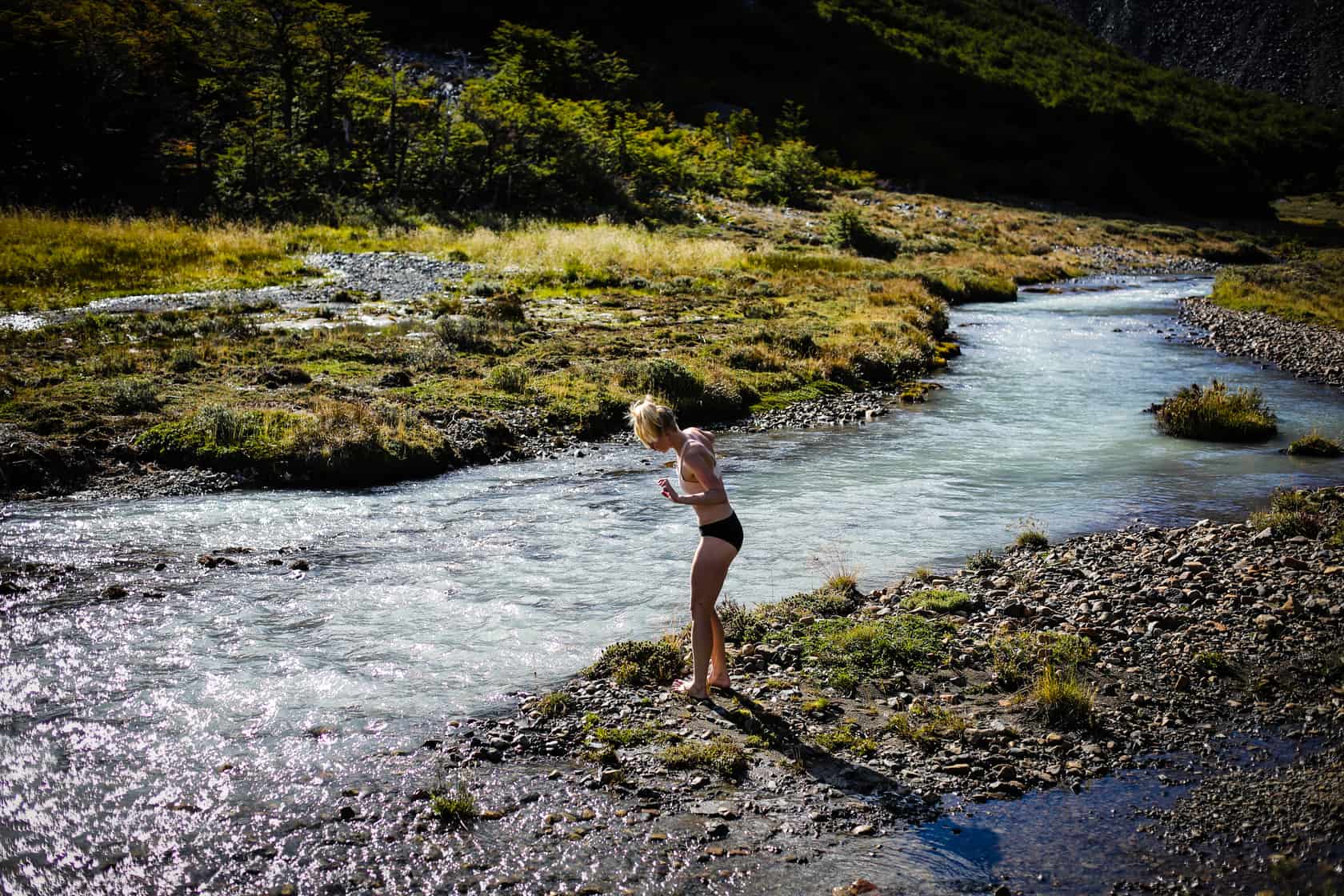"Maybe I ought to aim higher, but for now, it’s: DON’T HOLD ANYONE BACK."
From March 9th-24th, I spent two weeks photographing athletes Max Keith and Moisés Jiménez as they scouted and worked on an expedition in the mountains of Cerro Castillo, located in the Chilean Patagonia. The two are sponsored by The North Face Chile, and I was contracted to photograph their explorations for the brand. Said expedition is a special goal of Max and Moisés—therefore, I won’t share specifics of the project itself. The details of the expedition are theirs to share. What follows here, therefore, is a look behind the scenes (and behind the lens) at the photographer’s perspective of shooting an expedition in Chilean Patagonia.

Pre-Expedition: Preparation (the month of February)
When I was asked to photograph Max and Moi’s upcoming trip, I began preparing logistically as a photographer, but also physically as…well, as a human.
Their expedition was to take place in the sharp nail-peaks of Cerro Castillo, a chain of mountains in the south of Chile. The time there, for all of us, would therefore include running, scrambling, climbing, hiking, and carrying all of our gear to-and-from our base camp.
The month of February was, in terms of preparation, spent running, bouldering, and occasionally climbing. Here’s a quick rundown of my comfort leves with said activities: Running: comfortable. Bouldering: kind of comfortable. Climbing: umm.
My goal before heading to Patagonia was to feel comfortable in these three methods of movement; so, that’s what I focused on before the trip. My motivation here is not because I think I can keep up 100%, but because I need to be able to move—while schlepping camera gear—without holding anyone back. That is, honestly, always my goal. Maybe I ought to aim higher, but for now, it’s: DON’T HOLD ANYONE BACK.
I digress. February and early March were, for me, a time of pushing myself to feel comfortable in ways which weren’t natural for me, namely rock-focused activities.
So, on March 9th, Max, Moi and I flew from Santiago to Balmaceda in the south of Chile. To be exact, our destination was 1,138 miles south of Santiago; Cerro Castillo lies in the region of Aysén, deep in the Chilean Patagonia.
Base Camp: (March 10th -20th)

The Ascent
We spent one night in Coyhaique—Moisés hometown, and the largest neighboring city to Cerro Castillo—before rolling out to base camp. The guys prepared their gear, we stocked up on base camp provisions (my favorite purchase: Nutella), took our final showers, the like.
Then, the next morning, we began the trek to our base camp: the camp’s name is Neo Zelandes, named after the New Zealand-hailing climbers who supposedly completed the first climb to the summit of Cerro Castillo.
Thus began the march to base camp. This was hard. Within my own head, I was a baby about it. (Or maybe externally, I don’t know. I hope it was mostly in my head.)
The difficulty lies not in the hike. The hike itself is about five miles of solid steep trail. The difficult part was that we were all loaded. To. The. Gills. With gear. I’m talking tent, food, climbing equipment, rope, shoes…and for me, camera gear. Our hike up was miserable at first, and at points, downright hilarious. We all had a pack on our back and on our front, and Max and Moi carried their gear in giant North Face duffels (which are, as we concluded afterwards, definitely not meant to be carried for any significant distance.)
We started the hike normally clothed and with high morale. Halfway through, though, nobody was speaking; Max was surviving solely thanks to his iPod, Moi hunched over like a lowercase letter ‘r’, and I’d stripped my shirt and was using it as a barrier between my shoulders and the evil backpack straps (envision, like, the way that horses have a pad under their saddles. That.)
We did, in fact, make it. We set up our little base camp home, and spent the next days exploring the majesty of Cerro Castillo from there.

The Task
My task as a photographer on this trip was to show what Max and Moi’s expedition looked like in all aspects. So, I’d need to show them running, climbing, and scrambling—but I’d also need to show their time in base camp, i.e. cooking dinner, preparing gear, etc.
For me, this was a beautiful challenge in that when you’re shooting everything, you’re never not working. This meant that mentally, I had to be “on” all the time; this is something that I’m used to, but is nonetheless always a challenge. (For example, this meant that during the Hell Hike up to base camp, I had to buckle down, power-hike ahead of the guys, unpack my gear, and shoot their struggle up the mountain.)
The days in Cerro Castillo were, therefore, non-stop in terms of photography. We spent days out in the mountains, the guys scouting routes for their expedition, and myself shooting them.

The Challenges
We spent some days scrambling up the base of Cerro Castillo itself, and others scouting nearby glacial lakes. The difficulty as a photographer came, largely, in the form of wanting to protect not only my gear, but also myself. This was the marked difference between this assignment and others—I’m accustomed to having to protect my camera gear in adverse conditions (rain, snow, rocks, whatever.) But this time, I was thinking more about the safety of my actual body instead of my camera body, which was a new feeling.
Cerro Castillo is covered in scree fields. Covered. The only other time I’ve been in terrain even remotely similar that of Cerro Castillo was last fall, in the Tetons. I remember feeling terrified, there, that I’d be hit by a falling rock (doesn’t sound like a logical fear until you’re IN the field, and then it becomes very logical.)
The difference: the Tetons are wild, but traversed. They’re laid with trails, with signs, and generally full of other people. Cerro Castillo is pure wild: there are no trails, no loops around the scree fields, nothing. I think we went three straight days without seeing another person. And when you’re exploring, you just go straight up and hope that each rock you step on isn’t about to flip, crack, or fall…and that your partners climbing ahead of you aren’t going to knock a boulder loose.
Lesson learned here: bring a helmet. Prepare to protect your body in the same way you always prepare to protect your gear. There were days where I was disappointed as a photographer that I wasn’t able to continue ascending—not because I was physically incapable, but because the probability of being struck by a falling rock was too high. I was sans-helmet, and therefore sans-options.

The Environment
The environment in Patagonia is extreme, and this is something that I’ve been learning from Moisés throughout the past year. The time in Cerro Castillo gave me a chance to learn more about the region’s weather: how the clouds move, what the clouds mean, which clouds mean “get-down-from-the-mountain-NOW,” that kind of stuff. (Apparently danger is very cloud-based in Patagonia.)
The sun is another weather-component that we don’t usually think much of in many parts of the world—but in Patagonia, the sun is a very real beast. I’m talking SPF 50, all day, reapplied at all hours. Chileans largely attribute this strong sun to an ozone hole, which is located over Patagonia.
The Descent
Towards the end of the trip, we were joined by two friends—Eduardo “Pelao” Lebarca, who helped Max and Moi to climb to the summit of Cerro Castillo, and Max’s girlfriend Dani. They joined us in base camp for one night, and when we descended from base camp, we went down together.
The descent from base camp was a nine-mile trek to the nearest village, Villa Cerro Castillo. “Villa” consists of one main street, a teeny market that closes ca. 9:00 pm, a couple of refugios, and five or six street lights. We arrived late from base camp—Dani and I legitimately ran the entire nine mile descent with our gear to be able to get groceries (and beer) before the lil’ market closed—and headed to one of the refugios.
There, we ate back all the calories we’d been missing in the mountains; we drank tea, got warm, took hot showers, and dried out our wet gear. We sat next to a wood burning stove, warming up our bones and our socks, too. Our dinner was simple and perfect; my favorite mental image (which sums up the level of hunger and lack of calories going on here) is of Pelao, loading a potato chip with butter and popping it into his mouth.
Thus ended our time in the mountains of Cerro Castillo—with good vibes, warm toes, and butter-covered potato chips.

Post Trip: (March 21st - 24th)

The Conclusion
We spent the final few days of our trip back in Coyhaique, Moisés hometown. His family welcomed us, and we spent our time in the city climbing, biking, running, eating brownies, and drinking Patagonian beer. It was heaven.
These days were a lovely blur of Patagonian sunshine, apples, breweries, and great food. There was the day that we biked 10 miles to climb outside of Coyhaique; it was a bright sunny day, during which we had lots of fun and got very thirsty. (We were so used to Castillo—where you only need to bring one water bottle, because there’s clean water everywhere to refill and rehydrate—that all three of us forgot to bring water. After our hours on the rock, we ended up knocking in desperation on a farmhouse’s door for some agua.)
The most lovely aspect of these days in Coyhaique—and actually, of this trip in general—is that we got to play. That’s something that we forget about when we grow up, I think.
It’s so rare for us as adults to find—or to allow ourselves—the opportunity to play, to be dirty, and to revel in the simple things. To climb with our hands and to drink out of rivers and to wash dirt off our bodies in lakes, to hide out from the rain under trees and to get cozy in your tent at night next to your friends.
The days spend in Cerro Castillo were, in the end, a large responsibility—for Max and Moisés as athletes, for me as a photographer, and for all three of us as humans watching out for each others’ safety—but when it all boils down, it was an adventure. The kind that we dream about as kids.
We worked, but oh, we played. And we’ll do it again. I think this is my new addiction.
















